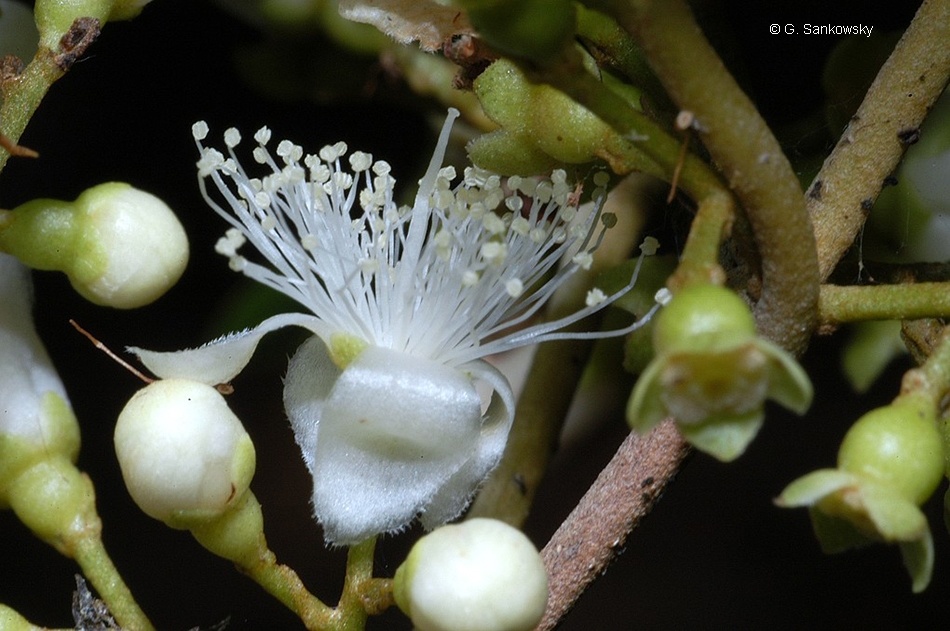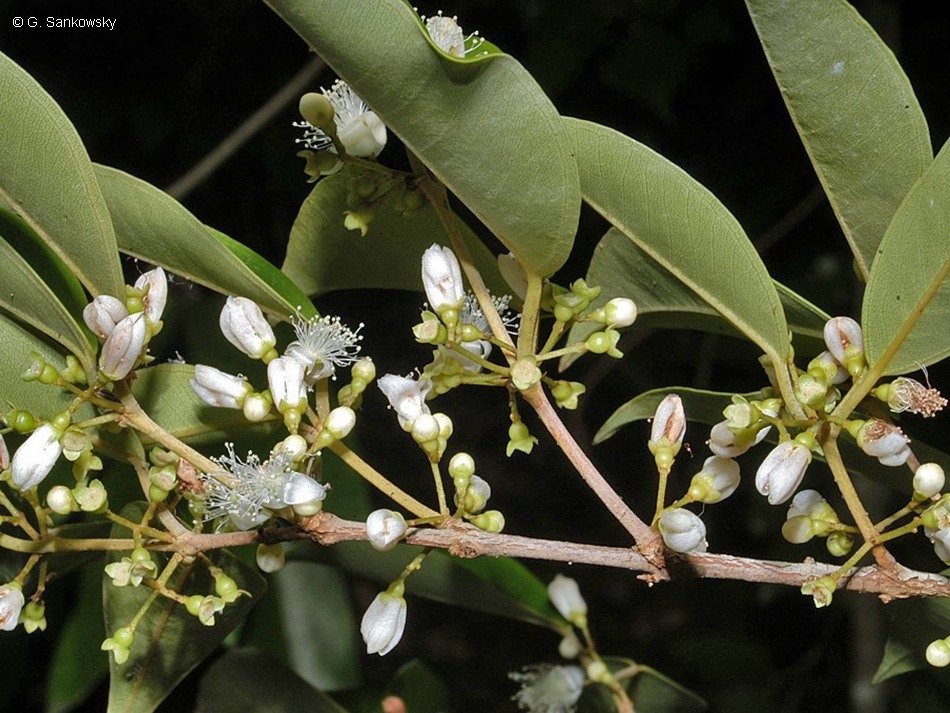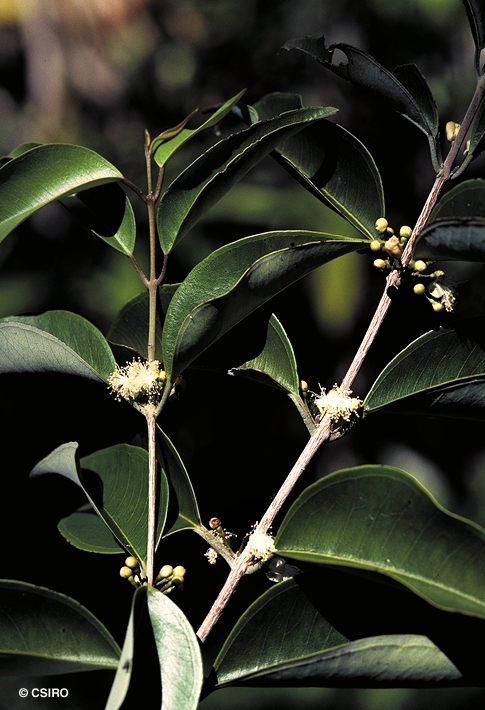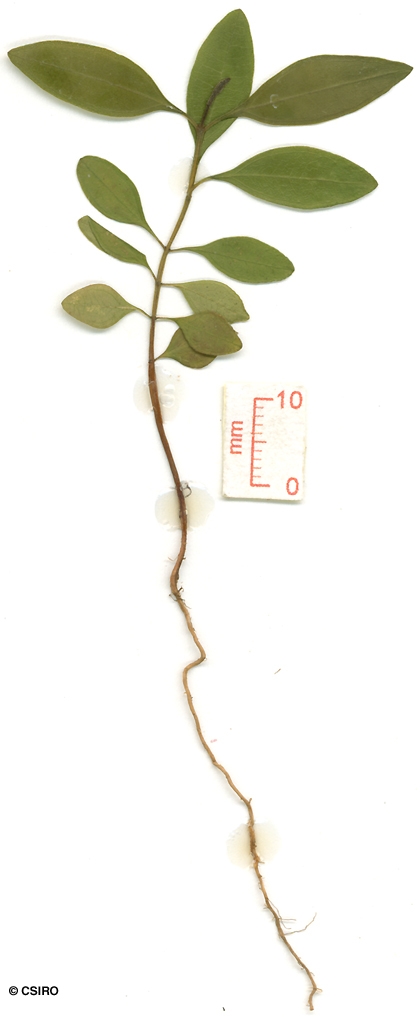Australian Tropical Rainforest Plants - Online edition
Rhodamnia australis A.J.Scott









Scott, A.J. (1978) Kew Bulletin 33: 447. Type: Australia, Northern Territory, Cannon Hill, W Arnhemland, Balgooy & Byrnes 1328 (holotype K; isotype CANB, L, MO, NSW).
Tropical Ironwood
Infructescence not exceeding the leaves and scarcely exceeding the petioles. Fruits globular, about 7-8 mm diam. Calyx lobes persisting at the apex of the fruits. Seeds variable in shape, about 3 x 2 mm. Embryo broadly U-shaped, cotyledons small, no wider than the radicle.
Cotyledons lanceolate, about 7-10 x 3-6 mm. Oil dots visible with a lens particularly near the margin. Small reddish stipule-like glands usually visible on the stem near the petioles of the cotyledons and first pair of leaves. At the tenth leaf stage: leaf blade elliptic, about 20 x 7-10 mm. Oil dots numerous. Underside of the leaf blade clothed in very fine, short, prostrate hairs just visible with a lens. Terminal bud densely clothed in short, prostrate, pale brown hairs. Stem 4-angled or shortly 4-ribbed. Seed germination time 204 to 223 days.
Endemic to Australia, occurs in NT and CYP. Altitudinal range from sea level to 100 m. Grows in monsoon forest, drier, more seasonal rain forest and scrubby forest on old sand dunes.
Although not often cultivated, this small tree with a spreading habit and greyish foliage would be a welcome addition to tropical gardens in drier areas or on well drained soils.





